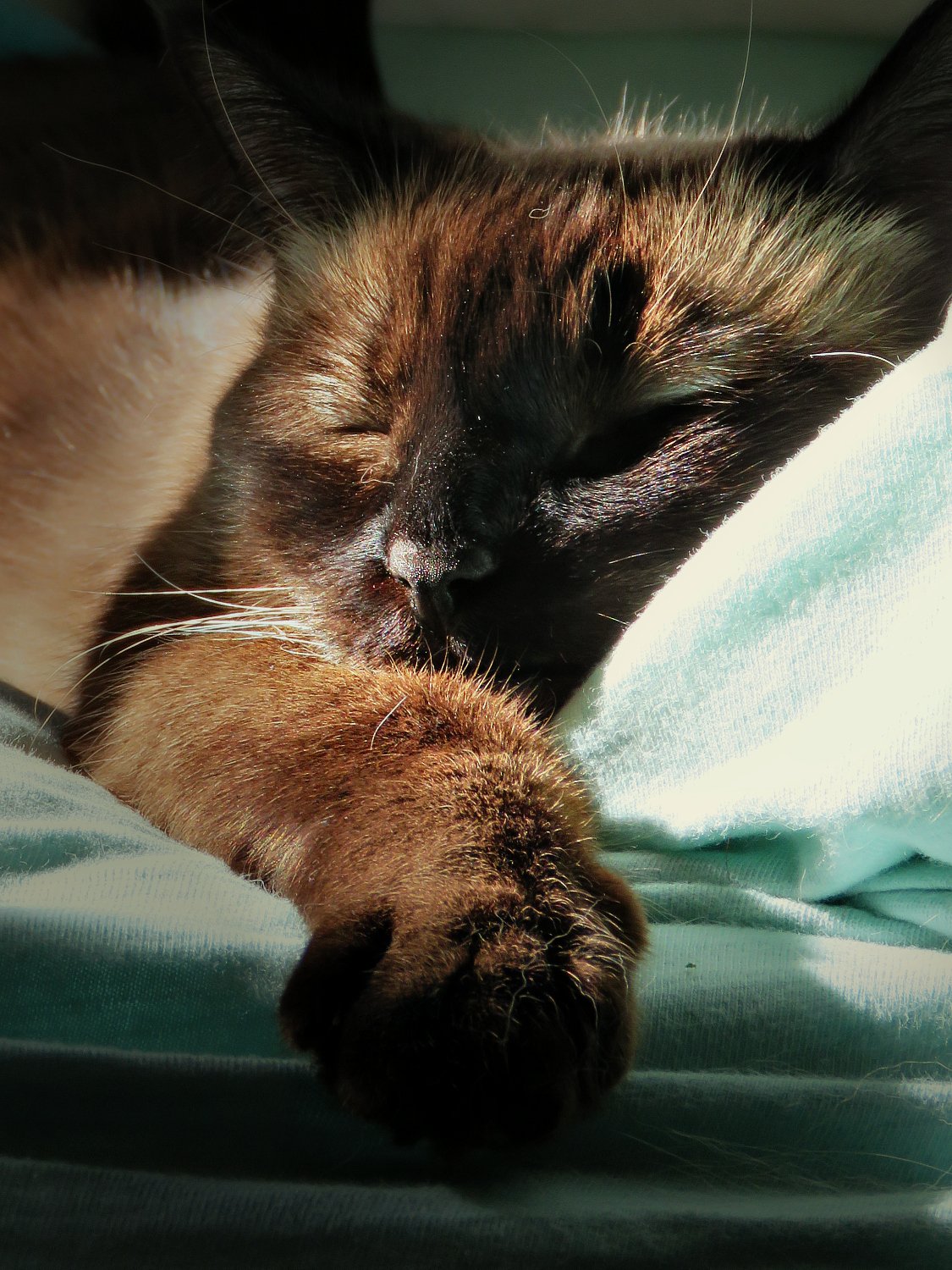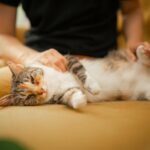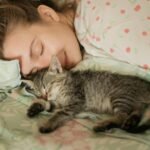Have you ever wondered if your beloved cat is genuinely happy under your roof? As cat lovers, we often catch ourselves searching for clues—hoping for a purr, a head-butt, or a playful leap to reassure us. The truth is, our feline friends have a whole secret language of happiness, and when you know what to look for, you might be surprised by how often your cat is telling you, “Life is good.” Get ready to unlock the emotional signs that prove your cat is truly thriving at home—some are so subtle, you might have missed them until now!
Purring with Pure Contentment

Nothing melts a cat lover’s heart like the gentle rumble of a purr. But did you know that purring goes beyond just “I like this”? When your cat curls up beside you, kneads your lap, and purrs with eyes half-closed, it’s like a warm hug of trust. Cats don’t fake purrs for just anyone—this is a real sign of happiness and relaxation. You might notice your cat purring after a good meal, during a nap, or when simply soaking up your company. Sometimes, the sound is so soft you have to press your ear gently to their side to hear it. Purring is their way of telling you, “I feel safe and loved right here.” It almost feels like the feline version of a smile.
Slow and Steady Blinks

If you’ve ever caught your cat staring at you, then slowly closing and opening their eyes, you’re witnessing one of the purest emotional gestures in the cat world—the slow blink. Experts often call this the “cat kiss.” When a cat blinks slowly at you, it’s not just a random movement—it’s an expression of trust and affection. It’s their way of saying, “I feel comfortable and at peace around you.” Try slow-blinking back. You might be surprised when your cat returns the gesture, forging an unspoken bond that only you two share. It’s a small, magical moment that tells you your cat is happy and feels safe.
Playful Antics and Zoomies

A happy cat is a playful cat. When your feline companion suddenly dashes across the room, chases invisible prey, or pounces on a stray sock, they’re not just burning off energy—they’re expressing pure joy. These “zoomies” aren’t just for kittens, either. Even older cats can get a case of the midnight crazies if they’re feeling good. A cat who feels secure in their home will initiate play, bring you toys, or even try to involve you in their little adventures. Their enthusiasm is infectious, and it’s a sure sign you’ve created an environment where your cat feels free to be their silly, joyful self.
Exposed Belly—The Ultimate Trust

If your cat flops onto their back and shows you their soft, vulnerable belly, consider yourself truly special. This is not just a request for a rub (though some cats do enjoy that)—it’s a massive display of trust and happiness. Cats only expose their bellies when they feel completely safe. In the wild, this would be risky behavior, so it means your cat believes you’d never hurt them. Sometimes, they’ll roll over and stretch, blissfully unaware of anything else. It’s a silent message that says, “I trust you with my life.” Resist the urge to always pet their belly, though—sometimes, it’s the gesture itself that matters most.
Gentle Head-Butts and Cheek Rubs

Head-butting, or “bunting,” is one of the sweetest ways a cat can show they’re happy. When your cat presses their head against your hand, face, or even your leg, they’re marking you as family. Their cheeks have special scent glands, and by rubbing you, they’re mixing their scent with yours—a true sign of belonging. It’s a little like a child hugging you tightly. When your cat comes to you for a head-butt, they’re saying, “You’re my person.” It’s a tiny, intimate ritual that cats save for those they adore and trust.
Chirps, Chatters, and Happy Meows

Not all meows are created equal. A content cat often uses a variety of vocalizations to communicate their joy. Chirps, trills, and soft meows can be a cat’s way of greeting you or expressing excitement. You might notice your cat talking to you when you walk in the door, or chatting as they watch birds from the window. These cheerful sounds are their way of including you in their world. When cats feel at home, their voices become more expressive and frequent. It’s like having a lively conversation with a close friend using your own secret language.
Relaxed Ears and a Calm Tail

A cat’s ears and tail are like emotional barometers. When your cat is happy, their ears will be up and facing forward or gently swiveling to catch interesting sounds. Their tail, instead of puffed or twitching nervously, will be held high or softly curled at the tip—sometimes even quivering with excitement. If your cat greets you with a tail held straight up, it’s the feline equivalent of a joyful wave. You can practically see their mood through these subtle signals. A tense cat will have flat ears and a flicking tail, while a happy cat’s body language is loose, relaxed, and open.
Kneading with Their Paws

Kneading is a leftover behavior from kittenhood—when kittens knead their mother’s belly to stimulate milk flow. When your adult cat kneads you, a blanket, or even the couch, it’s a sign they feel safe and comforted. Some cats do this with their eyes closed and purr like engines, completely lost in the moment. It’s almost as if they’re transported back to the happiest days of their lives. If your kitty makes biscuits by kneading, take it as the highest compliment—they’re telling you, “You’re my safe place.”
Grooming—Both Themselves and You

Cats are meticulous groomers, and a happy cat will often keep themselves clean and tidy. You might also notice your cat grooming you, licking your hand or even your hair. This isn’t just about cleanliness—it’s a loving gesture rooted in feline social bonds. In groups, cats groom each other to reinforce friendships and trust. So, when your cat gives you a gentle lick, they’re including you in their inner circle. On the flip side, a cat that neglects grooming may be feeling stressed or unwell, so regular self-care is a strong sign of emotional well-being.
Sleeping in Cozy, Open Spaces

Where your cat chooses to sleep says a lot about how they feel. A happy, secure cat will often nap in open spaces—on the couch, your bed, or even the very center of the room. They might stretch out, exposing their belly, or curl up in a sunbeam. Cats that feel anxious tend to hide, so a cat that sleeps out in the open is telling you, “I feel safe here.” Sometimes, they’ll even choose to sleep near you or on top of you, seeking comfort from your presence. Their relaxed sleeping positions are little signs of trust scattered throughout your home.
Appetite and Enthusiasm for Food

A healthy appetite is a classic sign your cat is happy. When your cat comes running at mealtime, meows excitedly, or even does a little happy dance, it shows they’re thriving. Cats that feel secure will eat with gusto and may even invite you to watch them eat—a behavior called “social eating.” On the flip side, a loss of appetite can signal stress or illness, so enjoying their favorite meals is a positive emotional indicator. Sometimes, a happy cat will even try to “share” their food with you, dropping a treat at your feet as if to say, “I want you to have some, too!”
Curiosity and Exploration

Curious cats are happy cats. When your feline friend investigates new boxes, sniffs around unfamiliar corners, or watches birds out the window with wide, sparkling eyes, they’re expressing a zest for life. A happy cat feels confident enough to explore their surroundings and interact with new things. You might find your cat perched on high shelves, squeezing into small spaces, or hunting imaginary prey. Their inquisitiveness is a sign of mental stimulation and emotional security. It’s almost as if your home is their personal playground, filled with endless possibilities.
Welcoming You at the Door

If your cat greets you at the door, it’s a huge compliment. Cats that feel bonded with their humans often develop routines around your comings and goings. They might meow, rub against your legs, or even bring a toy as a welcome-home gift. This behavior shows they miss your company and feel excited when you return. It’s a little daily ritual that speaks volumes about your relationship. Some cats will even wait by the window or door for you, their tails flicking with anticipation. It’s their way of saying, “I’m glad you’re home.”
Following You from Room to Room

Ever feel like you have a tiny, furry shadow? When your cat follows you around the house, it’s not just about getting food or attention. Cats that trail their humans are expressing a strong bond and genuine affection. They want to be part of whatever you’re doing, whether it’s folding laundry, reading a book, or just sitting quietly. Sometimes, they’ll settle nearby, just within arm’s reach, content to be in your presence. This behavior is a clear sign your cat feels safe, secure, and emotionally connected to you.
Tail Quivers and Upright Postures

A tail held high with a little quiver at the tip is like a feline exclamation point—it means your cat is delighted to see you. This unique tail movement is often reserved for their favorite people. It’s a joyful, almost electric display of happiness. You might notice this when you come home, or when your cat is about to receive a treat or some affection. An upright, confident posture with soft eyes and relaxed whiskers rounds out the picture of a cat who feels truly at home. Think of it as your cat’s way of waving hello, full of excitement and love.
Sleeping or Resting on You

One of the ultimate signs of a cat’s happiness is when they choose to sleep or rest on you. Cats are naturally cautious creatures, and they only let their guard down with those they trust deeply. If your cat curls up on your chest, stretches out on your lap, or even rests their head on your hand, it’s a huge emotional compliment. They’re seeking warmth, security, and comfort in your presence. The steady sound of your heartbeat, the rhythm of your breathing—these are lullabies to a content cat. Their choice to be close to you, especially during vulnerable moments like sleep, says, “This is home.”

Linnea is a born and bred Swede but spends as much time as possible in Cape Town, South Africa. This is mainly due to Cape Town’s extraordinary scenery, wildlife, and atmosphere (in other words, because Cape Town is heaven on earth.) That being said, Sweden’s majestic forests forever hold a special place in her heart. Linnea spends as much time as she can close to the ocean collecting sea shells or in the park admiring puppies.




